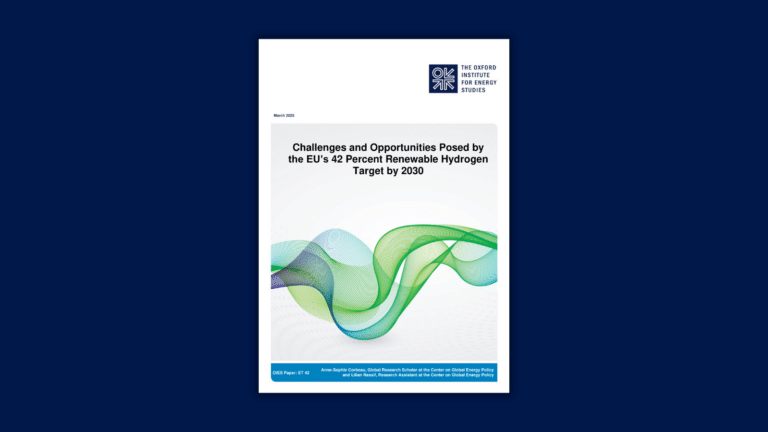This website uses cookies as well as similar tools and technologies to understand visitors’ experiences. By continuing to use this website, you consent to Columbia University’s usage of cookies and similar technologies, in accordance with the Columbia University Website Cookie Notice.
Energy Explained
Insights from the Center on Global Energy Policy
This Energy Explained post represents the research and views of the author. It does not necessarily represent the views of the Center on Global Energy Policy. The piece may be subject to further revision. Contributions to SIPA for the benefit of CGEP are general use gifts, which gives the Center discretion in how it allocates these funds. Rare cases of sponsored projects are clearly indicated.
For a full list of financial supporters of the Center on Global Energy Policy at Columbia University SIPA, please visit our website at Our Partners. See below a list of members that are currently in CGEP’s Visionary Circle. This list is updated periodically.
China’s commitment to what it calls its “dual carbon” goals of carbon neutrality by 2060 and to ammonia’s potential role as a hydrogen derivative and carrier have fostered expectations that its renewable ammonia market will expand significantly and thus so will production. China is also expanding its electrolyzer manufacturing capacity, which will be a key component of renewable hydrogen production.[1] This confluence of factors positions China well to transform its ammonia sector significantly in the coming years toward renewable-based production.
This post analyzes the current state and future of China’s renewable ammonia production. It finds that around 9 million tons per year (Mt/yr) of renewable ammonia production is currently at various stages of development. This evolution is driven by two types of (mostly) state-owned companies – electricity generators/distributors and fossil fuel/chemical conglomerates – though as of now a small group of companies is leading the way.
The Current State of China’s Ammonia Market
China is currently the world’s largest producer of ammonia. In 2022, its annual ammonia production stood at 56 Mt, or nearly 30 percent of global production.[2] This voluminous output is largely consumed domestically[3]—making China the world’s largest ammonia consumer as well. In 2020, agriculture utilized 71 percent of China’s total supply, while industrial applications accounted for the remaining 29 percent.[4] During the previous decade, China dealt with substantial overcapacity in ammonia production, which reached 30 percent at its height.[5] While the phaseout of inefficient facilities between 2015 and 2019 largely resolved this issue, capacity entered a new phase of growth since 2020 due to fertilizer shortage caused by supply chain disruption during Covid, efforts to reduce reliance on imports as well as anticipated demand growth, and a supportive regulatory environment for renewable ammonia.[6] Additionally, China recently expressed interest in implementing renewable ammonia co-firing (in coal-fired plants) as a way to reduce carbon emissions, which could increase future demand for renewable ammonia.[7]
But renewable ammonia production is still nascent in China. Not only is the country’s ammonia production almost entirely fossil based (99%), it also mainly relies on coal (85%),[8] among the most polluting pathways for ammonia synthesis (3.5 to 4.5 tons [t] CO2/t of product).[9] (Elsewhere, ammonia is typically produced from natural gas with a lower carbon footprint of 1.8 to 2.6 t CO2/t of product.[10]) Thus, in 2022, whereas China accounted for 30 percent of global ammonia production, it accounted for 45 percent of worldwide ammonia-related CO2 emissions.[11] To address this, in June 2024, the National Development and Reform Commission announced a new ammonia industry special action plan with a target of 13 Mt of CO2 emission reduction by 2025, mostly through the retirement and retrofit of inefficient facilities.[12]
Barriers and Drivers
Shifting from emissions-intensive to low-emissions ammonia typically involves the development of “green” or renewable ammonia, which is produced from nitrogen and hydrogen from electrolysis powered by renewable electricity, and “blue” or low-carbon ammonia, which is produced from natural gas or coal with carbon capture and storage (CCS). Thus far, since early 2022, China’s low-emissions ammonia production has been predominantly focused on renewable ammonia (Table 2). This is attributable to China’s limited commercial expertise in and constrained policy support for CCS as well as insufficient domestic gas resources.[13] Out of 96 carbon capture, utilization, and storage (CCUS) demonstration projects in China, only one is associated with hydrogen production and one for blue ammonia production.[14] Moreover, producing low-carbon ammonia would perpetuate reliance on coal.
Yet the rapid uptake of renewable ammonia in China faces challenges, including most notably high production costs. While the market price of ammonia in the country ranges from $420 to $570/t (3,000-4,000 yuan/t), the production cost of renewable ammonia is estimated to range from a low of $400 to a high of $820/t.[15]
But China is hardly the only country planning to develop low-emissions ammonia, and could also resort to imports if those are cheaper. Therefore, it is still uncertain how China’s development in renewable ammonia may affect future trade. Some analysts have suggested based on China’s recent decision to start importing blue ammonia from Saudi Arabia that the country may become an ammonia importer in the future.[16] Chinese firms are also leveraging the One Belt One Road initiative, a global infrastructure development strategy adopted by the Chinese government, to expand their presence overseas, including through planned investments such as a $6.75 billion renewable hydrogen (50,000 t) and ammonia (250,000 t) plant in Egypt’s Suez Economic Zone aimed at exporting to Europe, a project in Morocco to produce 1.4 Mt of renewable ammonia, and a project in Brazil to produce 60,000 t of renewable ammonia.[17] Such projects could be used to source ammonia for the Chinese market. Still, many experts are convinced that China will primarily focus on being self-sufficient.[18] Given the importance of food security, it is unlikely that China will resort to significant imports. Based on its recent progress in port infrastructure to support ammonia exports, the country could even position itself as a net exporter of renewable energy.[19]
Regardless of China’s future trade outlook, its domestic renewable ammonia pilot projects, such as the 180,000 t/year plant in Da’an, Jilin province, have made notable headway in recent years thanks to a confluence of policy support and private sector interest in the context of the country’s broader “dual carbon” push.[20]
At a national level, key state institutions have called on China to “actively guide ammonia to shift from high-carbon to low-carbon processes” and “promote the development of industrial technology powered by renewables.” [21] These calls are attributable to Beijing’s commitment to tackle the emission intensity of heavy industries as a part of achieving its “dual carbon” goals. National commitments are then implemented at a provincial and municipal level. Thus, more than 14 sub-national authorities have cited renewable ammonia development in their policy guidelines.[22] Some localities have shown more eagerness to employ industrial development policy than others; Jilin Province in the northeast, for instance, has repeatedly called for the construction of a “Northern Hydrogen Valley” to promote industrial and economic activity in the region.
Table 1. Summary of renewable ammonia projects in China
Product Status
Operational
Under Construction
Planned
Total
Number of Projects
2
10
28
40
Total Ammonia Production Capacity (t/yr)
720,000
2,445,000
5,948,000
9,113,000
Source: Adapted from the Appendix.
Existing national and sub-national policy guidelines on renewable ammonia tend to be high level and make scant mention of specific incentives, but several trends can be identified:
A capacity of 9.1 Mt in total is planned, under construction, or operational across China, including 3.2 Mt from projects that are operational and under construction – representing 4 percent of existing ammonia capacity (77 Mt) in 2023.[23]
New projects are concentrated in regions that are rich in wind and solar resources, particularly Inner Mongolia and the Northeast regions (Jilin, Liaoning, and Heilongjiang).
Most projects announced thus far have been developed by major state-owned enterprises, which regularly involve private partners in research, financing, and construction at the project level (see Appendix), and are designed to be largely self-sufficient, with low power storage levels and onsite generation staying behind the meter.
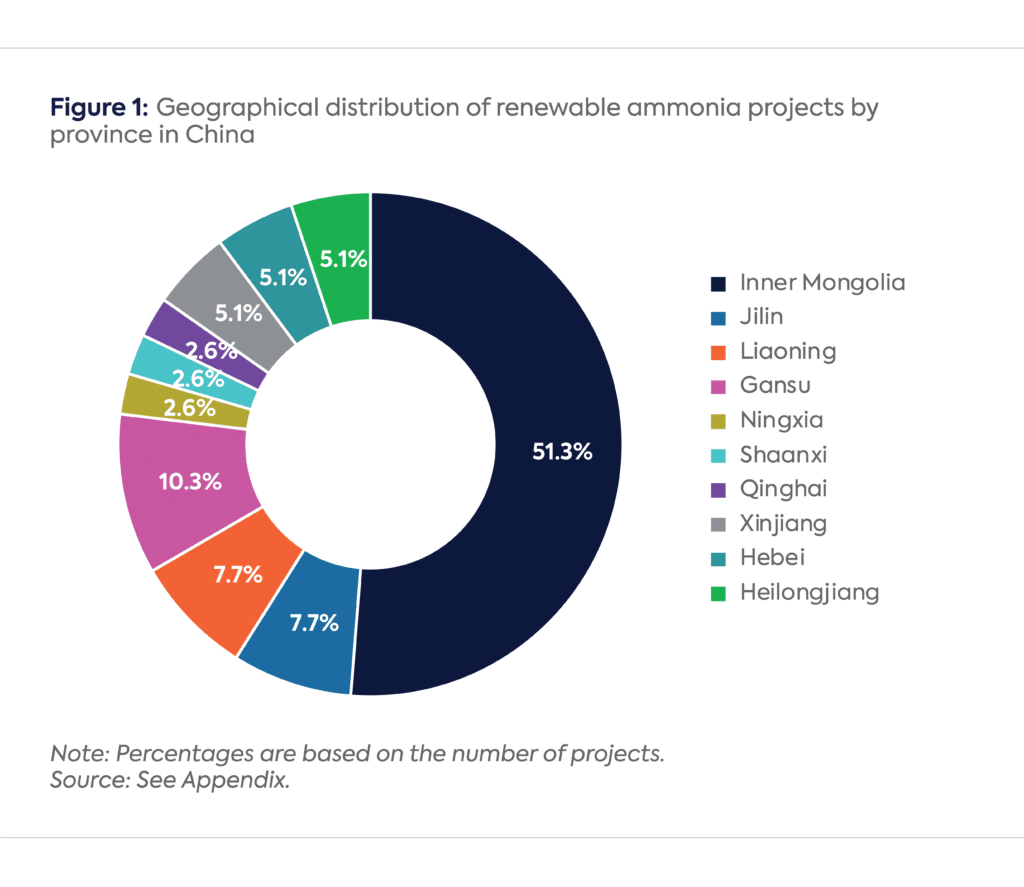
Most existing renewable ammonia players fall under two categories: electricity generators/distributors and fossil fuel/chemical conglomerates. Each has exhibited different preferences and strategies in project siting and construction. Electricity generators/distributors with existing positions in renewables (e.g., State Power Investment Corporation, China Energy Engineering Corporation, and Shenzhen Energy Group) have been responsible for most new announced projects and demonstrate a clear focus on facilities with same-sited wind/solar capacity. In contrast, fossil fuel/chemical enterprises (e.g., Sinopec and China Energy Investment) have preferred “greening” existing petrochemical facilities in oil and gas resource centers with integrated downstream production capacity (particularly of methanol).
Overall, a small contingent of companies is leading the way in renewable ammonia, with China Energy Engineering playing an outsized role. Planned capacity is highly concentrated in the “sub-million ton” level, which is comparable to the typical capacity of traditional ammonia plants.
Conclusion
By targeting an existing consuming hydrogen sector, China can speed up the development of its hydrogen industry. Indeed, renewable ammonia projects can benefit from China’s large domestic electrolyzer manufacturing capacity and robust development of wind and solar resources, while more such projects would lend electrolyzer manufacturers a huge outlet for their products, enabling them to consolidate their global lead.[24] One key uncertainty that remains is the appetite of Chinese end-users for a more expensive product in the absence of any tax credits, subsidies, or regulatory constraint similar to what can be found in Europe or the US, even as Chinese renewable hydrogen is likely to be much cheaper than Western equivalents.

CGEP’s Visionary Circle
Corporate Partnerships
Occidental Petroleum Corporation
Tellurian Inc
Foundations and Individual Donors
Anonymous
Anonymous
the bedari collective
Jay Bernstein
Breakthrough Energy LLC
Children’s Investment Fund Foundation (CIFF)
Arjun Murti
Ray Rothrock
Kimberly and Scott Sheffield
[1] Peng Hu, “Analysis of the Current Situation and Development Trends of China’s Synthetic Ammonia Industry(国内合成氨产业现状及发展趋势分析)”, February 29, 2024, http://www.qhrb.com.cn/articles/323393.
[2] Sohu News, “The Annual Production of Synthetic Ammonia in China is 56.01 Million Tons, Accounting for Approximately 30% of the Global Production (我国合成氨年产量5601万吨,约占全球产量30%),” October 8, 2022, https://www.sohu.com/a/590943356_121153986.
[3] Newsijie, “China’s Synthetic Ammonia Production Capacity Is Gradually Growing, and the Head Enterprises Have Appeared,” November 14, 2023, http://www.newsijie.com/chanye/huagong/jujiao/2023/1109/11336854.html.
[4] KPMG, “Carbon Capture, Hydrogen Storage, Shipping fuel, Blending for Power Generation: An Overview and Outlook of the Green Ammonia Industry (固碳、储氢、航运燃料、掺混发电:绿氨行业概览与展望)”, December 2022, https://assets.kpmg.com/content/dam/kpmg/cn/pdf/zh/2022/12/overview-and-prospect-of-green-ammonia-industry.pdf.
[5] Qianchan, “2021 China Coal Chemical Industry Segment Market Analysis,” February 22, 2021, https://finance.sina.com.cn/stock/relnews/cn/2021-02-22/doc-ikftpnny9077641.shtml; National Development and Reform Commission, “Energy-Saving and Carbon Reduction Renovation in the Synthetic Ammonia Industry (合成氨行业节能降碳改造),” August 26, 2022, https://www.ndrc.gov.cn/xwdt/ztzl/ghnhyjnjdgzsj/zjgd/202208/t20220829_1334056.html; production capacity of ammonia is around 77.5Mt, the actual produced amount is 56.01 Mt, leading to a 70 percent production capacity factor.
[6] Peng Hu, “Analysis of the Current Situation and Development Trend of Domestic Synthetic Ammonia Industry (国内合成氨产业现状及发展趋势分析).”; National Development and Reform Commission, “Notice on the Production and Supply of Fertilizers for Spring Ploughing in 2020 under the Prevention and Control of the New Coronavirus Pneumonia Epidemic (关于新冠肺炎疫情防控下做好2020年春耕化肥生产供应工作的通知),” February 19, 2020, https://www.ndrc.gov.cn/xxgk/zcfb/tz/202002/t20200219_1220746.html.
[7] Leigh Collins, “China Plans to Adopt Green Ammonia Co-firing as a Way to Halve Emissions from Coal-fired Power Plants by 2027,” July 19, 2024, https://www.hydrogeninsight.com/power/china-plans-to-adopt-green-ammonia-co-firing-as-a-way-to-halve-emissions-from-coal-fired-power-plants-by-2027/2-1-1679991; China Energy News, “Ammonia as a New Path for Reducing Carbon Emissions in Coal-Fired Power (氨能为煤电降碳探新路),” December 25, 2023, http://paper.people.com.cn/zgnyb/html/2023-12/25/content_26035041.htm.
[8] International Energy Agency (IEA), “Ammonia Technology Roadmap: Towards More Sustainable Nitrogen Fertiliser Production,” executive summary, 2021, https://www.iea.org/reports/ammonia-technology-roadmap/executive-summary.
[9] IEA, “Ammonia Technology Roadmap,” https://iea.blob.core.windows.net/assets/6ee41bb9-8e81-4b64-8701-2acc064ff6e4/AmmoniaTechnologyRoadmap.pdf; International Renewable Energy Agency (IRENA), “Innovation Outlook: Renewable Ammonia,” 2022, https://www.irena.org/-/media/Files/IRENA/Agency/Publication/2022/May/IRENA_Innovation_Outlook_Ammonia_2022.pdf.
[10] IRENA, “Innovation Outlook: Renewable Ammonia.”
[11] IEA, “Ammonia Technology Roadmap.”
[12] National Development and Reform Commission, “The National Development and Reform Commission and Other Departments Issued (国家发展改革委等部门关于印发),” June 7, 2024, https://www.ndrc.gov.cn/xxgk/zcfb/tz/202406/t20240607_1386767.html; KPMG, “Carbon Capture, Hydrogen Storage, Shipping Fuel, Blending for Power Generation: An Overview and Outlook of the Green Ammonia Industry.”
[13] Global CCS Institute, “China Carbon Capture, Utilization, and Storage (CCUS) Annual Report (2023),” March 2023, https://www.globalccsinstitute.com/wp-content/uploads/2023/03/CCS-Progress-in-China-CN.pdf.
[14] Ibid.
[15] Hanxin Zhao, Linda M. Kamp, and Zofia Lukszo, “The Potential of Green Ammonia Production to Reduce Renewable Power Curtailment and Encourage the Energy Transition in China,” International Journal of Hydrogen Energy, 47 (May 2022), https://doi.org/10.1016/j.ijhydene.2022.04.088. SPIC reported unusually low production costs of around $410/ton at a 0.3 yuan/kWh electricity cost, while an academic study suggests a higher levelized cost of $820/ton, and the Ammonia Energy Association references potential production costs of $400-500/ton by 2030, indicating that current costs are likely higher. Kevin Rouwenhorst, “Renewable Ammonia in China: Full Speed Ahead,” Ammonia Energy Association, February 28, 2024, https://ammoniaenergy.org/articles/renewable-ammonia-in-china-full-speed-ahead/.
[16] Ma’aden News, “Ma’aden Blue Ammonia Exports to China and Major Markets Helping to Cut Carbon Emissions Globally,” May 18, 2023, https://www.maaden.com.sa/en/news/details/577.
[17] Polly Martin, “Egypt Signs Deal with Chinese Developer for $7bn Green Hydrogen and Ammonia Project,” Hydrogen Insight, October 23, 2023, https://www.hydrogeninsight.com/production/egypt-signs-deal-with-chinese-developer-for-7bn-green-hydrogen-and-ammonia-project/2-1-1544225; People’s Daily, “Many African Countries Are Exploring the Development of the Hydrogen Energy Industry (非洲多国探索发展氢能产业),” April 8, 2024, https://www.yidaiyilu.gov.cn/p/010FSV99.html; Xinhua News, “Construction of the First Green Hydrogen Plant in Brazil (巴西建设首个绿氢工厂),” July 27, 2022, http://www.news.cn/world/2022-07/27/c_1128867495.htm; Enerdata, “Chinese Firm Plans a 1.4 Mt/Year Green Hydrogen Project in Morocco,” April 24, 2023, https://www.enerdata.net/publications/daily-energy-news/chinese-firm-plans-14-mtyear-green-hydrogen-project-morocco.html.
[18] Wang Li, “Academician Wu Minghong: Green Ammonia Is Expected to Become the Main Path for China’s Energy Exports (吴明红院士:绿氨有望成为中国能源出口的主要路径),” Huaxia Energy Network, November 10, 2023, https://www.ccedia.com/statute_detail/c-_detailId%3D1722985763343642624.html.
[19] Natalie Kakish and Elizabeth Owen,“China Eyes Green Ammonia Exports by Late 2024,” Argus, March 30, 2023, https://www.argusmedia.com/en/news-and-insights/latest-market-news/2434148-china-eyes-green-ammonia-exports-by-late-2024.
[20] Julian Atchison, “New Electrolysis-Based Ammonia Projects in China,” May 7, 2023, Ammonia Energy, https://ammoniaenergy.org/articles/new-electrolysis-based-ammonia-projects-in-china/.
[21] National Development and Reform Commission, “Notice on the Release of the ‘Implementation Guidelines for Energy Conservation and Carbon Reduction in Key Areas of High-Energy Consumption Industries’ (2022 Edition) (关于发布《高耗能行业重点领域节能降碳改造升级实施指南(2022年版)》的通知),”February 11, 2022, https://www.ndrc.gov.cn/xwdt/tzgg/202202/t20220211_1315447.html.
[22] These include Beijing, Baotou, Jilin, Nantong, Jingzhou, Qinhai, Jiangxi, Shanxi, Inner Mongolia, Shanghai, Henan, Guizhou, Ningxia, and Shaanxi.
[23] Peng, “Analysis on the current situation and development trend.”
[24] Jian Wu, “The Green Ammonia Rush in China, “China Hydrogen Bulletin, August 4, 2022, https://chinahydrogen.substack.com/p/the-green-ammonia-rush-in-china.
More on Energy Explained Energy Explained
3 Coming Flashpoints in Climate Geopolitics
World leaders are meeting in New York this month at the request of the United Nations Secretary-General António Guterres to discuss the state of global ambition on climate change.

Tensions With the United States and the EU Could Threaten India’s Role as Refinery Hub
The US imposed tariffs of 50 percent on about half of Indian exports on August 27, following a Trump administration executive order targeting the country for its continued imports of discounted Russian oil.
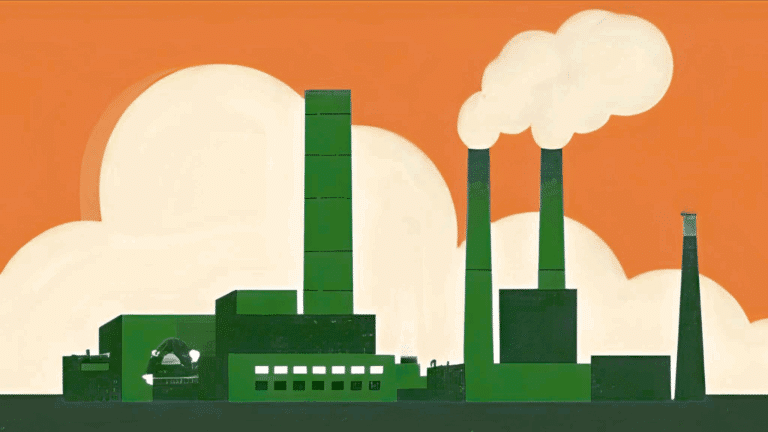
Power of Siberia 2: Russia’s Pivot, China’s Leverage, and Global Gas Implications
President Putin's trip to China marks a turning point in the trajectory of Russian pipeline gas flows to the country.
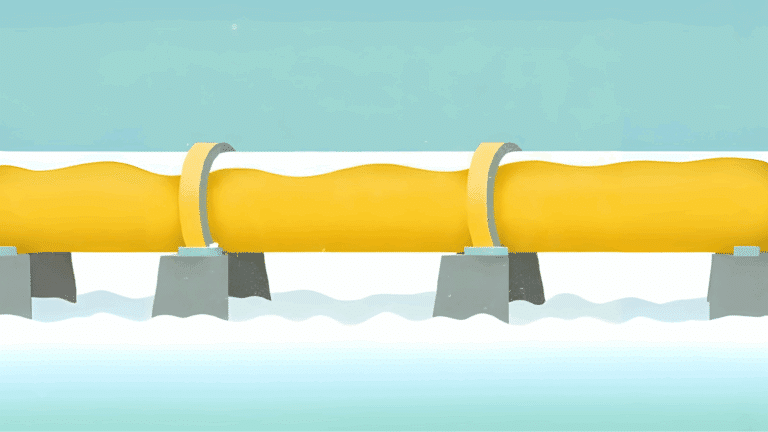
How the EU Might Become the OPEC of Global Gas
Despite producing little natural gas, the EU could become the most powerful entity in global gas markets in the decades to come.

Relevant
Publications
Trump’s One Big Beautiful Bill Act Has Given the US Hydrogen Industry Certainty — but Where Will the Green Energy Come From?
H2 projects will have to compete for a shrinking pipeline of zero-carbon electricity with energy-intensive data centres.
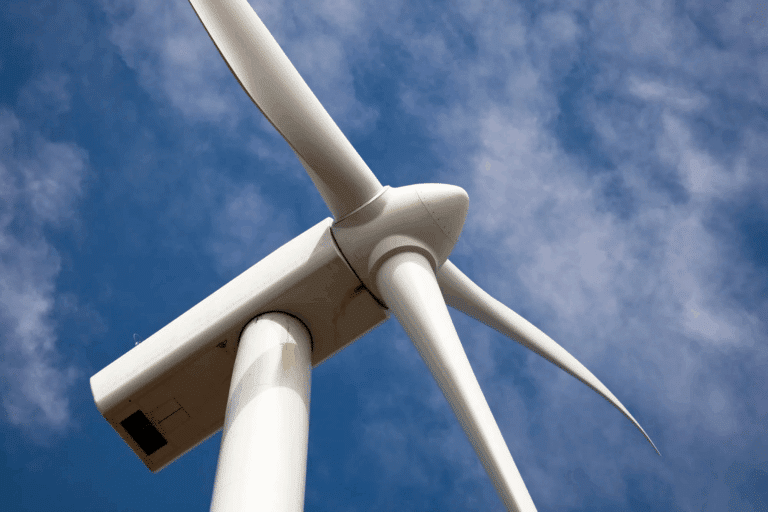
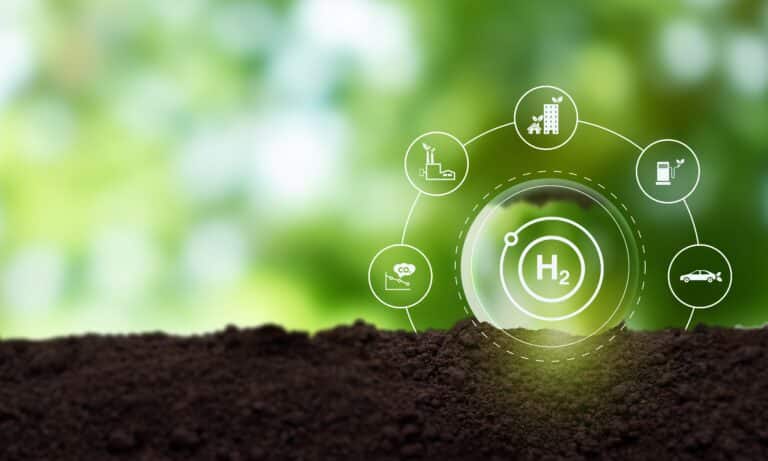
Challenges and Opportunities Posed by the EU’s 42 Percent Renewable Hydrogen Target by 2030
